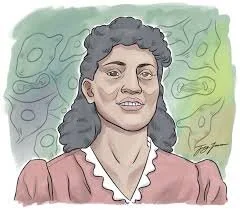Henrietta Lacks
Essential Questions: How did racism play a role in the treatment Henrietta Lacks receive? How should Henrietta Lacks’ family be compensated for her lasting contribution to science and medicine?
Standards:
LS1B: Growth and Development
ETS1: Engineering Design
Image: Troy Lawrence, The Varsity
Henrietta Lacks was a young African American mother living in Maryland in 1951 when she was diagnosed with cervical cancer. She sought treatment at Johns Hopkins university, where physicians took a biopsy of her tumor. They discovered that the cells they gathered multiplied at an unusually fast rate, skipping many of the normal cell cycle checkpoints. While the cells themselves make for an interesting case study of mitosis, Ms. Lacks’ case has gained fame for the importance of her cell line in future science research and development (eg. discovery of the Polio vaccine) and notoriety for the way in which she and her family were mistreated during and after her illness and subsequent death. Questions surround the quality of Henrietta Lacks’ treatment. Additionally, while Lacks’ line of cells are still invaluable in scientific research, she was not informed that the cells would be harvested and her family was not made aware until 1975. While companies have accrued billions of dollars in profits from research conducted using the immortal HeLa cells, her family has never been compensated. Would this have happened if Ms. Lacks was white? In what other ways have corporations profited off Black folks and how can reparations be made? Both book and movie titled The Immortal Life of Henrietta Lacks serve as excellent resources to launch into both the science and the ethics of this case.

